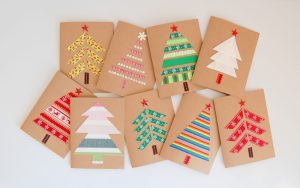
The Tradition of Christmas Cards

The tradition of sending Christmas cards began in the United Kingdom in 1843, thanks to Sir Henry Cole. He was a senior civil servant and founder of what later became the British Post Office. Sir Henry wanted to find a way for regular people to make use of the postal system, which until then had mostly been a luxury for the wealthy. Together with his friend John Horsley, an artist, he developed the idea of a festive greeting card. They designed the first Christmas card, sold it for one shilling, and printed about 1,000 copies. The card featured three panels. The outer ones showed people helping the poor, while the center portrayed a joyful family Christmas dinner. Despite some criticism—for showing a child sipping wine—the card was a success. It became a cherished collectible over time.

The growing success of the Penny Post, introduced in 1840, also helped fuel the popularity of holiday cards. Trains replaced horse-drawn carriages, enabling faster and cheaper mail delivery. By 1870, the cost to send a card dropped to just half a penny. This change made the tradition accessible to the masses. Improved printing methods in the 1860s further boosted card production.
Early Christmas cards often featured nativity scenes, but by the late Victorian era, images of robins and snowy landscapes took over. These wintry themes were inspired by a severe British winter in 1836 and the red-uniformed postmen, affectionately called “Robin Postmen.”
Cards Arrive in the United States
In the U.S., Christmas cards emerged in the late 1840s but were initially too expensive for most. That changed in 1875 when German-American printer Louis Prang began mass-producing affordable cards. In 1915, John C. Hall and his brothers launched what would become Hallmark, now one of the largest card companies in the world.

Notably, in 1891, Annie Oakley—America’s famous sharpshooter—sent what is believed to be the first personalized Christmas card. She was in Scotland at the time. Annie sent cards featuring her own photograph in tartan attire, which she designed herself and had printed locally.
By the 1910s and 1920s, homemade cards became a creative outlet for many. Adorned with foil, ribbon, and in unique shapes, they were often hand-delivered due to their delicate nature.
Today, Christmas cards come in countless styles—from humorous cartoons and nostalgic winter scenes to religious imagery and photos of families. Many people buy cards that support charities, a practice that began in Denmark in the early 1900s when a postal worker introduced decorative charity seals for envelopes. The idea spread rapidly, with millions sold and adopted by other countries.

While some view Christmas cards as an added holiday chore, others see them as a meaningful tradition. Each card is a small but heartfelt gesture—a reminder that someone thought of you, gathered your address, and sent a piece of their world and their love. In the end, every card is more than paper and ink—it’s a token of connection, memory, and joy.



